Five key pre-run stretches
Setting off out the blocks without warming up will not only harm your performance and reduce your chance of running a PB, but will also increase the risk of injury. That’s why we’ve put together a list of key running stretches for you to include in your warm-up before you head off out for your run.
Whilst there are a number of muscles you need to warm up before you run, we’ve picked out the following to include in our pre-run stretch guide:
- Hamstrings
- Quadriceps
- Groin
- Glutes
- Calves
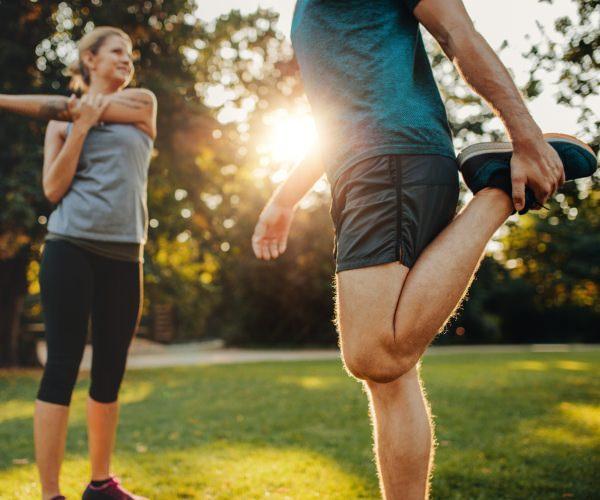
Hamstring Stretches
The hamstrings are located at the back of the leg behind the thigh and come in the form of three muscles. These three muscles (semitendinosus, semimembranosus and biceps femoris) all help you extend your knee and move your hip. This helps you complete a whole host of different movements including walking, running and - most importantly - jumping once you pass the finish line.
To stretch your hamstring before running you should:
- Sit on the floor and extend the leg you want to stretch as far as you can. This should leave your leg as close to the floor as possible without hurting yourself.
- Then move the foot on your other leg inwards, preferably so it is touching the thigh of your extended leg.
- Once you are in position, lean forward as if you are trying to touch the foot of your extended leg.
- Hold this pose for around 30 seconds, then switch legs and do the same hamstring stretch with the other leg.
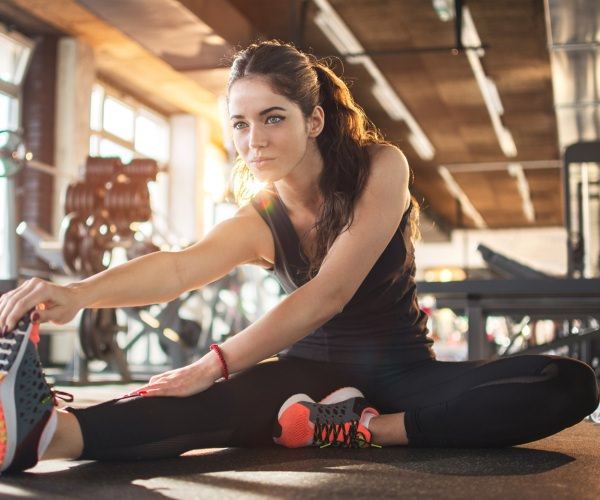
Quadricep Stretches
The quadriceps muscles come in a group of four and are located at the front of your thigh. The four muscles that make up the quadriceps are the vastus intermedius, vastus medialis, vastus lateralis and rectus femoris. These four muscles help you extend your knee and flex your hips when running, meaning that quadriceps stretches are extremely important to do before exercising.
To stretch your quadriceps you should:
- Start off by standing with a straight back and legs
- Then lift your heel in the air and place one hand around it
- Once you have done this, pull the heel up in a straight line until it reaches your bum
- Hold this position for 30 seconds and then repeat this quadriceps stretch with the other leg
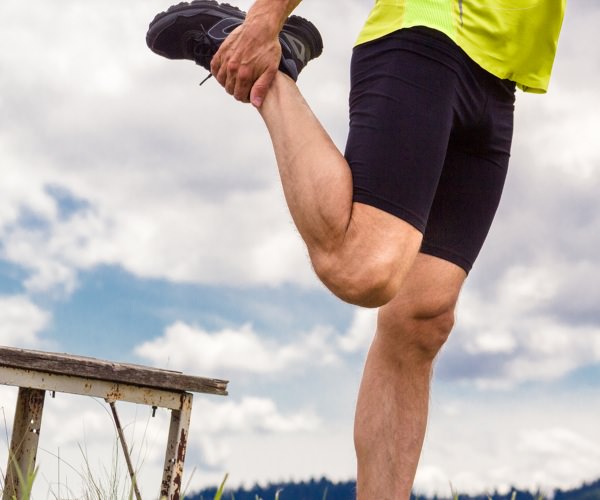
Groin Stretches
The groin muscles otherwise known as the hip abductor muscles can be found on the inside of your thigh. They are made up of the adductor brevis, adductor longus, adductor magnus, gracilis and pectineus. The job of the groin muscles is to let you bring your knee and thigh closer to the middle of your body. This is important when running as it helps you change direction and stay balanced as you make your way past the marathon crowds.
To stretch the groin muscles, you should:
- Begin by standing up straight
- Then bend your right leg and lean to the right whilst keeping your left leg straight
- You will begin to feel your groin strain once you do this
- Hold this position for 30 seconds
Swap legs and perform the same groin stretch.
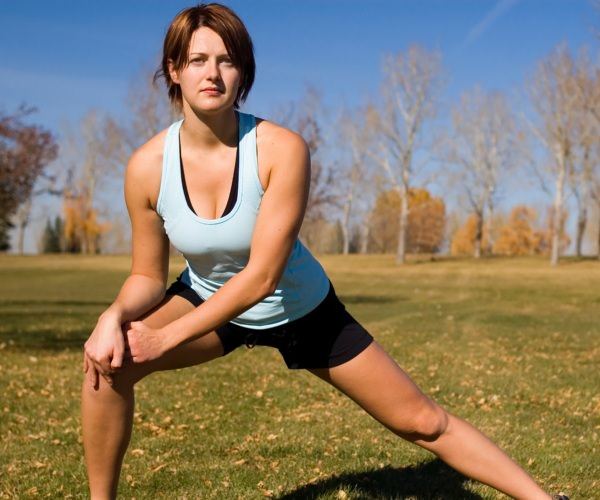
Glute Stretches
Your glutes (also referred to as your bum) are made up of three main muscles. These are your gluteus minimus, gluteus maximus and gluteus medius. Your glutes help you to raise and rotate your legs, this makes stretching your glutes important before running.
Follow these simple steps to stretch your glutes:
- Begin by lying down flat on the floor
- Then bend one knee and bring it up towards your torso
- Wrap your hands around your knee and gently pull it towards your stomach; you will feel the muscle stretch
- Hold this pose for 30 seconds
- Then, switch legs and do the same glutes stretch on the other side
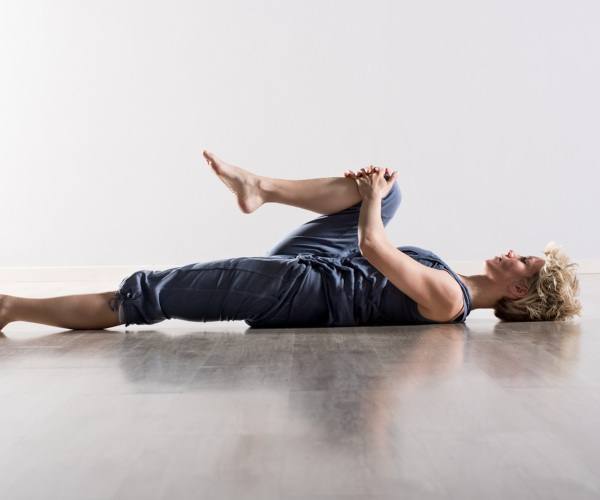
Calf Stretches
Your calves are located behind your shin at the back of your leg. Two muscles, the gastrocnemius and soleus make them up. These muscles allow you to pull your heel, making you able to put one foot in front of the other when you run.
To stretch your calves, you should:
- Find a wall and stand half a yard away from it
- Step forward with your right leg and move your left leg back
- Make sure to keep your feet parallel to one another
- Then, bend your right knee and press through with your left leg
- Hold this calf stretch for a total of 30 seconds, then switch legs
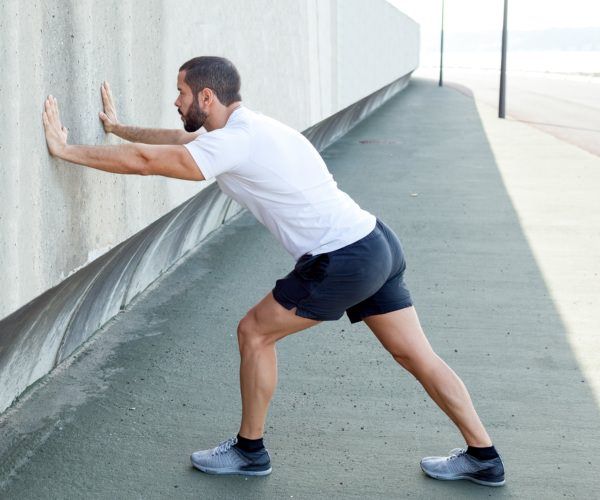
These are all good stretches to do before a run, but remember they are not the only stretches you should do. You should add in your own stretches that target other areas of the legs and other body parts such as arms.
Once you have finished stretching and you are ready to start your run, you should also remember to drink water. This will help you to stay hydrated* while exercising, especially when taking part in long-distance events such as marathons.
If you’re a running novice and looking for further advice (on any running topic - not just stretches to do before running!) then check out our marathon and training advice page.
* Water contributes to the maintenance of normal physical and cognitive function and normal regulation of body temperature.
At least 2L of water, from all sources, should be consumed per day, as part of a healthy diet and lifestyle

Being Brave Enough To Take On A New Challenge
“The man who moves a mountain begins by carrying away small stones” ~ Confucius
Take a look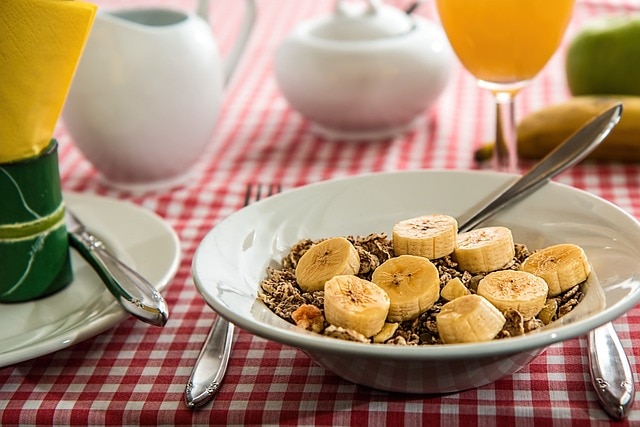
Eating After a Run: Our Guide to Marathon Eating
Knowing what to eat before, during and after a marathon can be difficult. But don't worry, we've put together a guide on marathon nutrition - take a look!
Take a look
Running in The Rain & Other Weather Conditions: Our Guide
The British weather doesn't need to stop your running schedule. With some adjustments, you can stay on track. See more on running in the rain & more.
Take a look
Marathon Motivation: Running your best London Marathon
Running a marathon is not an easy sport, and staying motivated before race day can be a challenge. Read more about marathon motivation here.
Take a look
How to Perfectly Execute your Long Run: 4 Top Tips
Knowing how to perfectly execute a long run can take some practice. Lucky for you, we have some tips and tricks to help you physically and mentally!
Take a look
How to Avoid and Prevent Injury Whilst You Run
Knowing when and how to prevent an injury whilst running and exercising is important for your training consistency. Find out all you need to know here.
Take a look
How to Add Recovery Runs to Your Routine
Repetitive movements and exercise can have an impact on your body. Recovery runs can help our endurance by making our bodies stronger. Find out how to do this.
Take a look
How Interval Training Improves Your Running Pace
If you’re looking to improve your pace, interval training running can help! Find out how interval training improves your pace with Buxton®.
Take a look
Calculate Your Running Pace
If you’re taking part in a big run or are just trying to increase your pace, you’ll need to calculate running pace. Calculate your running pace now.
Take a look